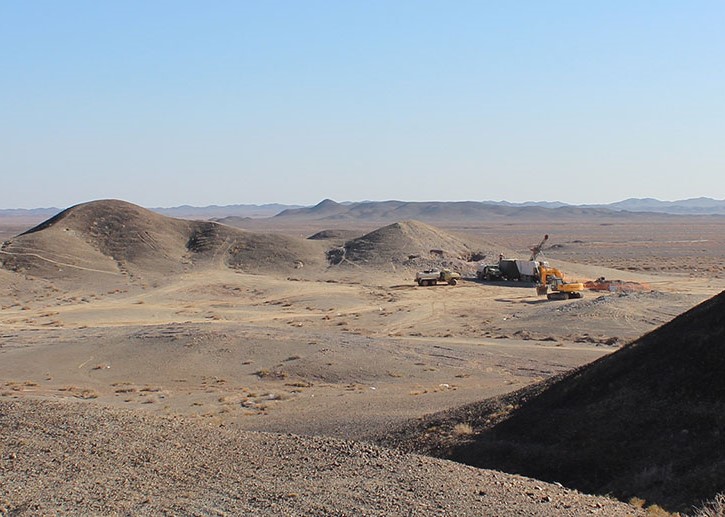Erdene Resource Development Corp has announced the results of an independent Preliminary Economic Assessment (PEA) study for its 100%-owned Khundii Gold Project in southwest Mongolia. The PEA was prepared in accordance with National Instrument 43-101 Standards of Disclosure for Mineral Projects by RPMGlobal Asia Ltd. The PEA envisions a high-grade, open-pit mine beginning at the Bayan Khundii Striker Zone, expanding into adjacent zones within Bayan Khundii, prior to incorporating resources from the Altan Nar deposit. The development incorporates a conventional gravity separation circuit and a carbon in pulp plant with processing capacity of 1,800 t per day.
The PEA includes 2.7 million mineable tonnes from the Bayan Khundii resource at an average head grade of 3.65 g/t gold, of which 98% are Measured and Indicated Resources. The Altan Nar deposit for the PEA contributes 1.9 million mineable tonnes at an average head grade of 3.11 g/t gold, of which 70% are Measured and Indicated Resources. These deposits are being developed as a single Khundii Gold Project.
“Today’s PEA confirms that the Khundii Gold Project is a high-return, low-capital and low-operating cost project that will form the cornerstone development in the emerging Khundii Gold District,” said Peter Akerley, Erdene’s President and CEO. “The Project has the potential to provide strong returns to investors, bring industry and employment to a remote area of Mongolia and add to national gold reserves. We have a long history of operating responsibly in the country and we look forward to creating value for all stakeholders as we continue to develop this exciting project.”
“Next steps include a Pre-Feasibility Study carried out in parallel with mining license, construction and operating permit applications in early 2019,” continued Akerley. “In addition, we will continue efforts to add resources through follow-up drilling on the Khundii licenses and with further exploration in the highly prospective surrounding district. We will also opportunistically acquire additional licenses in the region as they become available.”
The PEA is based on an open-pit mining operation targeting 600,000 t per year of feed material for the process plant. The total mineable mineralised plant feed is 4.6 Mt at an average diluted head grade of 3.42 g/t gold and strip ratio of 10.5:1 (waste tonne: plant feed tonne). Mineralisation starts at surface and 70% of mineable resources are located within 115 m of surface. The deposit structure, grades and depth suggest selective open cut mining will be utilised. Underground mining below the current open cut pit is not within the PEA scope of work but will be examined in future study.
Mining will use hydraulic excavators in backhoe configuration. Drilled and blasted material will be loaded into haul trucks, with waste rock deposited in engineered dumps adjacent to the pits, and ore hauled to a crusher or run-of-mine pad adjacent to the processing plant. At Altan Nar the estimated 19 km road distance to the processing plant means that ore hauled from the pit will need to be placed nearby and transferred into road-trains for haulage to Bayan Khundii.
The PEA study assumes processing of ROM material via a conventional gravity separation circuit and a carbon in pulp plant. The ore-processing plant will be located adjacent to the Bayan Khundii open pit and throughput will target 600,000 t per year, nominally 1,800 t per day. Total mineralised material processed in the plant over the course of the mine life is 4.6 Mt at an average diluted head grade of 3.42 g/t gold. Using an estimated mill recovery of 82%, total recovered gold over the project life is 412,000 oz.
Ore from the Bayan Khundii deposit is free-milling with an average recovery of 92% while the Altan Nar deposit, which includes arsenopyritic ore locally with associated low recoveries, will only include the free-milling portions of the resource with an average recovery of 62%.
Operating costs are based on the mining and processing scenario outlined above and assumes contract mining.











